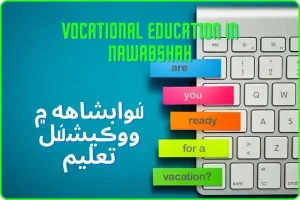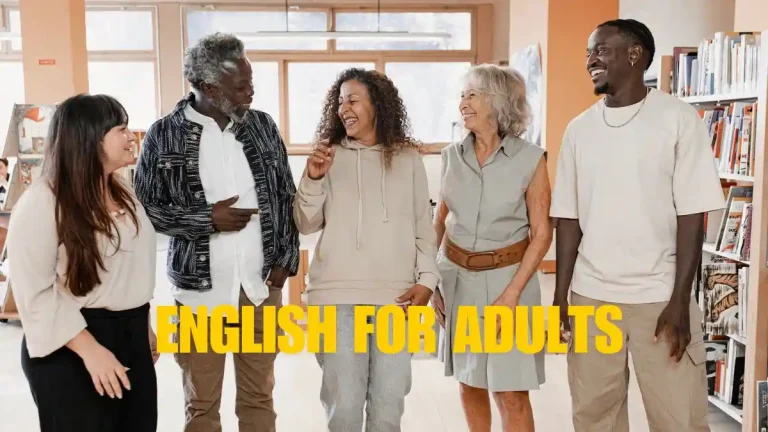Vocational Education in Nawabshah
Transforming Lives in Nawabshah Through Vocational Education in Nawabshah
VATE Academy provides hands-on practical, career-focused vocational education in Nawabshah that equips individuals with skills for specific trades or professions, enhancing employability or enabling self-employment.
Often referred to as career and technical education (CTE), it is known by various names worldwide, such as TVET (Technical and Vocational Education and Training) or TAFE (Technical and Further Education).
Vocational education in Nawabshah spans secondary to post-secondary levels, typically delivered through specialized institutions like trade schools, technical colleges, and community colleges. This education system plays a crucial role in meeting industry demands for skilled workers and is shaped by each country’s unique economic and labor needs.
VATE Academy, established in 2021, offers quality vocational education in Nawabshah District, focusing on essential skills such as digital marketing, web development, Shopify, SEO, and Daraz. Committed to empowering students with practical knowledge, VATE Academy equips them for success in today’s competitive job market, fostering a skilled workforce in the region.
Let’s explore which countries are effectively delivering vocational education and how their systems are helping to bridge the skills gap, promote economic growth, and ensure a skilled workforce for the future.
Table of Contents
History
Historically, vocational education relied on in-person, hands-on training, often conducted in classrooms or job sites under the guidance of experienced professionals. In recent years, however, online vocational education has grown, allowing students remote access to essential trade skills and soft skills training from industry experts.
Beginning in the late 1980s, a global shift, known as “new vocationalism,” emphasized aligning educational goals with industry needs, particularly to address youth unemployment and foster economic growth.
Consequently, many countries expanded TVET (Technical and Vocational Education and Training) programs, integrating work-based learning and modern curricula developed in collaboration with industry to better prepare students for the workforce.
Humboldt’s Vision: Cultivating Character and Knowledge Beyond the Workforce
Wilhelm von Humboldt championed an educational philosophy that prioritized personal growth, ethical character, and broad knowledge, rather than simply preparing individuals for specific jobs.
His approach emphasized developing adaptable, informed citizens who could navigate diverse careers throughout life, standing in contrast to today’s more narrow focus on job readiness.
Pioneering Vocational Education in Argentina
Argentina was a trailblazer in vocational education in Latin America, establishing apprenticeship programs as early as 1903.
Under Juan Perón, formal training became widely accessible, leading to the creation of the National Workers’ University in 1948, addressing the urgent need for skilled workers during rapid industrialization.
Australia
In Australia, vocational education and training (VET) primarily occurs post-secondary through registered training organizations, with some secondary schools offering apprenticeships and traineeships for students in years 10 to 12.
While five independent Trade Colleges remain, the VET system encompasses public and private providers under frameworks like the Australian Quality Training Framework.
The apprenticeship system combines school-based and workplace training, lasting three to four years for apprenticeships and one to two for traineeships.
Funding is managed by state governments, and qualifications are shaped by industry needs. The National Centre for Vocational Education Research (NCVER) oversees research and statistics in VET.
EU
Education and training responsibilities lie with member states, but the European labor market necessitates cooperation, particularly in vocational education. The Copenhagen Process, initiated in 2002, aims to enhance vocational training’s appeal across Europe through agreed priorities.
Supported mainly in northern Europe, there’s a push to shift resources from universities to vocational training due to graduate unemployment and a shortage of skilled tradespeople.
Finland
In Finland, vocational education is part of secondary education. After completing nine years of comprehensive school, students can choose between a lukio (high school) or vocational school, both lasting three years.
Vocational schools are free, and low-income students can receive state grants. The curriculum focuses on vocational skills, with options to pursue higher vocational schools or universities afterward.
Germany
Germany’s vocational education system follows the German model established by the Berufsausbildungsgesetz (Vocational Training Act) in 1969, unifying training standards across the state, unions, and trade chambers.
Highly popular, two-thirds of young people under 22 begin apprenticeships, with 78% completing them. Recent years have seen investments aimed at retaining young people in education due to a decline in apprenticeship starts.
India
The National Skills Qualifications Framework (NSQF) is a competency-based structure in India that categorizes qualifications into ten levels based on knowledge, skills, and aptitude. Established on December 27, 2013, NSQF supersedes previous frameworks.
In 2014, the Ministry of Skill Development and Entrepreneurship was created to promote skill development. The Skill India Development Mission, launched on July 15, 2015, coordinates skill efforts, while partnerships with the private sector enhance access and quality in skill training, supporting both short-term and long-term programs across the nation.
Japan
In Japan, vocational schools, known as senmon gakkō, are two-year institutions within the higher education system. Students can enroll after high school graduation, though it’s not mandatory.
These schools offer various majors, including computer technology, fashion, and English, catering to different career aspirations. Senmon gakkō provides specialized training that equips students with practical skills, preparing them for immediate employment in their chosen fields.
South Korea
South Korean vocational high schools provide programs in agriculture, technology, commerce, maritime studies, and home economics. The first year follows a common curriculum, while specialization occurs in the second and third years, often including workplace training.
Recent initiatives like Vocational Meister Schools emphasize workplace experience. The 2007 rebranding to professional high schools aimed to enhance appeal, leading to higher rates of transition to tertiary education among graduates.
Malaysia
In Malaysia, vocational education has gained respect, with various training institutions under the Ministry of Education. These include vocational schools, technical schools, and vocational colleges, alongside polytechnics and community colleges under the Ministry of Higher Education.
The Industrial Training Institute of Kuala Lumpur, established in 1964, marked the beginning of formal vocational training. Today, the system reflects a commitment to quality skill training, adapting to market needs and opportunities.
Mexico
Mexico’s vocational education system is administered by federal and state governments, encompassing various institutions funded through a mix of federal and state budgets.
After compulsory education ends at age 15, many students pursue vocational programs, which are categorized into short training courses and longer upper secondary education tracks.
These programs offer practical and theoretical training, with pathways leading to vocational degrees or qualifications necessary for further education in technical fields.
Netherlands
In the Netherlands, nearly all students transitioning from lower to upper secondary education enter vocational programs (MBO), with around 50% enrolling in one of four main fields: technology, economics, agriculture, and personal/social services.
Programs vary from one to four years, allowing students to choose between apprenticeship pathways and school-based training. Graduates can progress to higher professional education (HBO), with collaboration between schools and businesses shaping the vocational landscape and skill development.
Pakistan
In Pakistan, vocational schools, known as polytechnic or polytrade schools, provide essential job-related skills through practical training and specialized content. A professional certificate from these institutions significantly enhances a resume.
However, the job market presents a challenge, with 1.8 million young people entering annually. As of 2018, only 433,237 places were available in formal Technical and Vocational Education and Training (TVET) across 3,740 institutes, highlighting a significant gap between demand and supply in vocational education.
Bottom-line
Absolutely! While Pakistan has a system of vocational education to equip students with essential skills, misgovernance and the prevalence of ghost school teachers significantly hinder its effectiveness.
Consequently, many students are reluctant to enroll in trade schools, leading to a shortage of skilled professionals. Only a few institutions operate effectively, and government trade schools often struggle to perform well due to these issues.
VATE Academy courses for vocational education in Nawabshah

Learn vocational education in Nawabshah with VATE Academy. We specialize in digital skills training, including Digital Marketing, SEO, Shopify, Amazon VA, Daraz
Course Provider: Organization
Course Provider Name: Muhammad YaseenKeerio
Course Provider URL: https://vate-academy.com/muhammad-yaseen/
Course Mode: Onsite
Course Workload: PT96H
Start Date: 2025-02-03
End Date: 2025-04-04
Duration: PT8H/W, P3M
Repeat Count: 12
Repeat Frequency: Weekly
Course Type: Paid
Course Currency: PKR
Course Price: 10000
5



